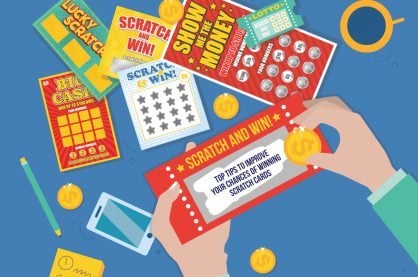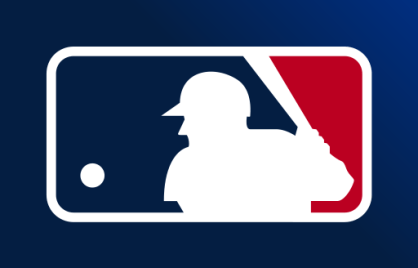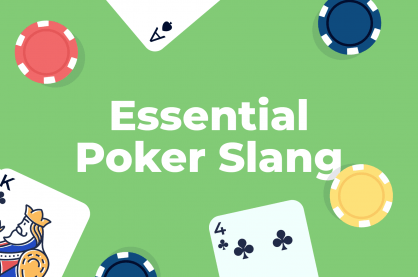What Is A Straddle In Poker & When Shouldn’t You Do It?
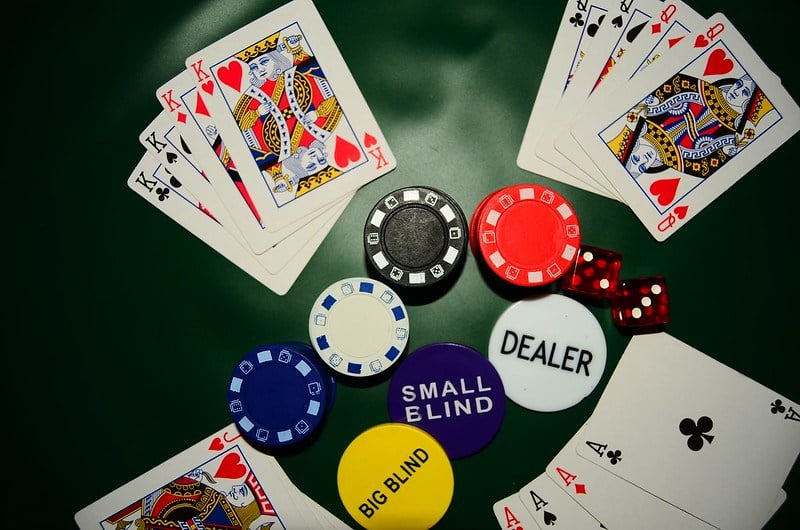
A straddle in poker means voluntarily paying an extra blind, or in other words, doubling the bet before anyone has seen their cards. This article will teach you exactly what this means, as well as when you should and shouldn’t do it. For example, you should avoid straddling when short-stacked, but consider it when button straddling is allowed.
Straddling in poker can be overwhelming for beginners. But after reading, you should not only understand the basic mechanics, but the best opportunities.
What Is A Straddle In Poker?
In poker, a straddle is akin to paying an extra big blind.
If this already sounds confusing to you and makes your eyes glaze over, don’t panic—you’re not alone. A poker term that often trips up beginners is “blinds.” So stay with me, as just for a moment, we do need to get technical.
In Texas Hold ‘Em, there is always a “button” placed at the table (see below). This is a physical button. The two players to the left of the button are called the blinds. The first person to the left of the button is the small blind; the person to the left of them is the big blind. If you’re playing $1/$2 stakes for example, the small blind will have to pay $1 and the big blind will have to pay $2.
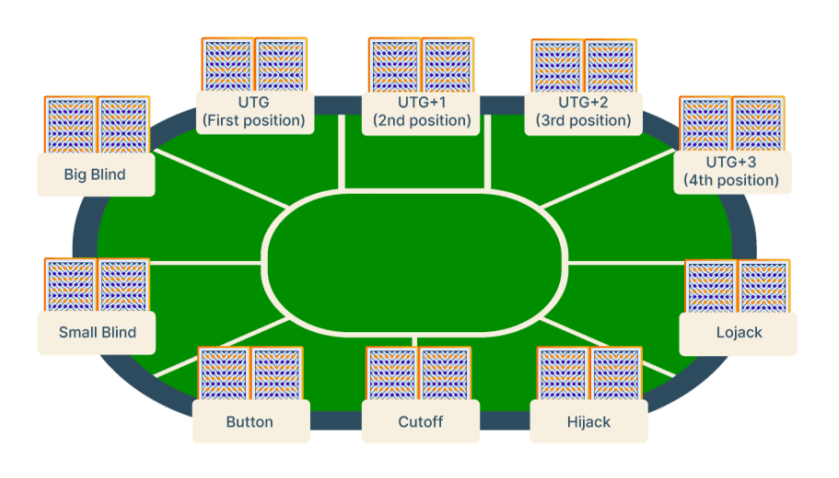
Paying the blinds is mandatory—it’s actually a shorthand term for “blind bet.” Because you have to pay this amount before you’ve seen your cards. In other words, you have to pay it blindly.
(Bonus technical language if you want to get really precise: This is why players start with a raise preflop rather than a bet. The blinds were already a placed bet, so, for example, you can’t bet $10 but you can raise to $10).
A straddle means voluntarily paying an extra blind.
How Do Straddles Work In Poker?
In the example of the $1/$2 game, the small blind is $1, the big blind is $2, and you can straddle to $4—all without seeing your cards. Again, it functions like an extra big blind because you’ve put in this money blindly before seeing your cards.
People can even “double straddle” at certain casinos. This would mean the small blind pays $1, the big blind pays $2, the straddle pays $4, and the double straddle pays $8.
What would a super-ultra-rare triple straddle look like in this example? The triple straddle player would pay $16.
Straddling in poker is doubling the last bet before anyone has seen their cards. If the stakes were $5/$10, the player straddling would pay $20 prior to being dealt their hand. You need to declare your intention to straddle in advance.
Pro tip: If you choose to straddle, point to those extra chips so the dealer notices. They will then announce, “STRADDLE!” to the table so everyone knows that you placed your straddle before seeing your hand.
Once a player has straddled, that is now the minimum price to continue playing. Instead of it costing a minimum of $2 to keep playing, it is now $4 (or whatever the amount straddled to is). Straddling in poker is a way of raising the stakes.
Who Can Straddle In Poker?
First of all, it is important to mention that every casino is different and will have their own rules and regulations. Some venues will not allow straddling at all. The same applies when playing online poker.
Most commonly, however, you can choose to straddle when you are seated under-the-gun. That means you are the first person to act preflop. This is why in the previous section we indicated the person left of the big blind—that is the under-the-gun seat. If a casino allows straddles, you can always elect to straddle when you are here.
From time to time you will encounter a casino that also permits button straddles (a.k.a a ‘Mississippi straddle’). This means you can straddle when you are located on the button seat as well.
What if both the under-the-gun player and the button player want to straddle?
It is up to the casino who takes priority—don’t hesitate to ask. Good questions to ask when you’re new to a card room are:
- Do you allow straddles here?
- Can you straddle on the button or only under-the-gun?
- Does the under-the-gun straddle or the button straddle get priority?
In rare scenarios, you will find a game where you can straddle from any position at the table. In any case, the action usually starts left of the last straddle preflop. If the under-the-gun player straddled, the person to their left will have the first decision preflop whether to fold or play their hand. If the button player straddled, the person in the small blind will have the first decision.
There are definitely exceptions to button straddles, so it’s always good to clarify with the dealer.
What you need to know is this:
- Most places allow under-the-gun straddles.
- When you straddle under-the-gun, the action preflop starts on the player to your left (under-the-gun + 1).
Why Straddle In Poker: Pros And Cons
Now that we know what a straddle in poker is and who can straddle in Texas Hold‘Em, we need to answer the burning question: WHY straddle in poker?
There are reasons both for and against straddling in Texas Hold‘Em:
Pros
- Straddling in poker raises the stakes. It now costs double to continue playing—and raises will be adjusted even bigger accordingly.
- Poker is a people game—you want to create a fun atmosphere. People that don’t straddle are often viewed as uptight. Even though you might lose money straddling when you are dealt lousy cards, it can be worth it because it encourages everyone at the table to play looser and more relaxed. Think of it like buying a cocktail.
- When the player(s) in the blinds are fish, it’s good to straddle when you are under-the-gun because you will play bigger pots while having direct position on them.
- When you straddle under-the-gun, you no longer act first preflop. It is an advantage to see what everyone else does and then get to make your decision.
Cons
- You waste chips every time you straddle and aren’t dealt a good hand.
- Straddling in poker raises the stakes—which can also be a negative. The game might play bigger now than you can afford. Even if finances aren’t an issue for you, everyone’s stack depth gets cut in half.
For example, in a $1/$2 game where everyone starts with $100, all players have 50 big blinds. If the game is straddled to $4, now everyone only has 25 big blinds. This means players will be all-in much more frequently and the game will play higher variance. Luck will play an outsized role.
When You Should And Shouldn’t Straddle In Poker
For the reasons above, you should avoid straddling when short-stacked (or most players at the table are short-stacked). All you are doing is minimizing your skill edge by making the game wilder and more swingy.
There is also a big difference between a button straddle and an under-the-gun straddle. When you straddle under-the-gun, you are making the pots play bigger when you are in a relatively bad position at the table. When you button straddle, however, you are putting more money in the middle when you have an advantage (because you get to act last after the flop and will get to see what all the other players do ahead of you. You will have more information to make your decisions). Button straddling is the most powerful option in Hold ‘Em.
A button straddle is considered such a huge advantage that many casinos do not permit it. It is too great of an edge. High stakes players don’t like it because it “kills the game” since poker pros can manipulate button straddles so effectively.
Under-the-gun straddles don’t provide that same advantage. The times they do are when fishy players are seated in the blinds, in which case that can sway you towards a straddle. Otherwise under-the-gun straddles are best avoided unless most players at the table are deep-stacked.
Can You Straddle In A Poker Tournament?
Finally you may wonder if you can straddle in a poker tournament. This one has an easy answer… no!
The poker chips you lose in tournaments are more valuable than the chips you gain. You can’t afford to be splashy and throw on a straddle to bump up the stakes. Even if you’re chip leader, you won’t be permitted to straddle in a poker tournament anyways!
Lead image credit: Poker Photos/Flickr, CC BY 2.0
